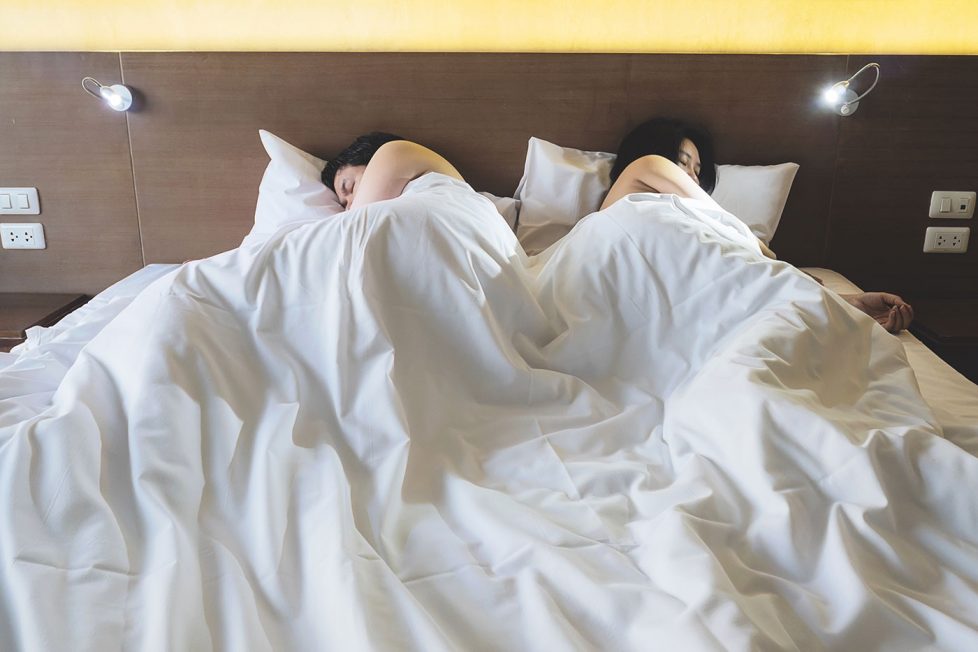Is asexuality on the rise?
Though asexuality is becoming more common, the orientation is still widely misunderstood.

Though asexuality is becoming more common, the orientation is still widely misunderstood.

But asexuality is finally becoming increasingly visible, after being in the shadows for too long. An increase of awareness concerning asexuality could indeed help young people find themselves and their identities, and change the way we think about sexuality in general.
Asexuality – defined generally as not experiencing sexual attraction – has also been called “the invisible orientation”. It tends to be misunderstood and under-discussed; people may not believe someone can really be asexual, or they dismiss asexuality entirely. Common misconceptions about asexuality include that asexuality equates to celibacy (it doesn’t), or that it’s a choice (it’s an orientation). But despite confusion and dismissal, asexuality and asexual voices have been getting louder and demanding recognition over the past decade.

As awareness of asexuality as an option grows, more young people may embrace it. There’s generally not much research about the prevalence of the orientation, though it’s been known for many decades. One 2004 study published in the Journal of Sex Research found that about 1% of the British population surveyed identified as asexual. A 2010 study of survey data from the U.S. of people ages 15 to 44 found that, depending on how you define asexuality, anywhere from less than 1% up to around 5% of the U.S. population could fit the bill.
The few studies that do exist indicate that the asexual community (also called ACE) is growing. According to ELLE, when the Asexuality Visibility Education Network (AVEN) was founded in 2001, 1,500 people joined; 16 years later, that number has increased by more than 8,000 percent to 125,000, making it the largest asexual community online. In 2004, Anthony F. Bogaert, a sex researcher at Brock University in Canada, found that of 18,000 British subjects, one percent of them self-identified as asexual. That means that, even by a conservative estimate, there are some 70 million asexual people around the world today.
Nowadays, asexuality is not such a big deal as it was before. A limited awareness of asexuality had made it harder for past generations of young people around the world to realise their identities – even as recently as millennials. Fortunately, younger generations may now be set up to find out about asexuality sooner – and may also be more empowered to vocalise their identities. The number of resources and amount of representation has grown significantly in recent years.
There have always been people who didn’t want or seek out sex, and there have long been people who have described themselves (even if only in the recesses of their own minds) as asexual. It’s just that before Google came along, they couldn’t find each other. Some asexual people are in romantic relationships, others aren’t. Some are outgoing, others are shy.
Some are sexually active for the sake of their partners or social pressure, some have never so much as kissed another person. Some think sex is disgusting, some are indifferent, and some think it’s great for other people but have no wish to “go there” themselves. But what all asexual people have in common — and what defines asexuality as an orientation — is that, while they may have a desire to connect with other people, asexuals have no desire to connect with them sexually.
It’s not that asexuality is on the rise, it’s more an increase of awareness. Asexual people have always been around, but not always seen. The rise in numbers in this community just sheds light on these individuals feeling more comfortable in their own skin and accepting truly themselves.
Shows like Shadowhunters and Sex Education are paving the way for asexual representation in mainstream media, demonstrating there’s a place for asexual characters on TV. Perhaps the show that has done this best of all is Bojack Horseman, in which a main character, Todd, has a multi-season arc exploring his own sexuality. Of course, not every depiction of asexuality in television has been good.
For example, the 2012 episode of House, ‘Better Half’, features a married couple who both identify as asexual, whom House believes to be lying about it. While this was originally seen as one of the first showings of asexuals in mainstream television, it can’t be described as an example of asexuality at all. After discovering a perfectly normal, happy couple, House insists there must be something wrong with them if they aren’t interested in sex.
The particular ways in which sex was considered important changed significantly throughout the 20th century, as we stumbled awkwardly from a culture that prized sexual restraint to one that celebrated free expression — or at least the outward appearance of it.
At the same time, the rise of sexology, sexperts, and lifestyle journalism meant that we started talking about sex more than ever before: as a health issue, a relationship issue, and an identity issue. Increasingly, sex was expected to hold our relationships together, boost our self-esteem, and dissolve our discontent. These assumptions about sex are so ingrained, that if you’re sexual you don’t notice them. But asexual people do notice them, because their experiences don’t fit.
And over the past couple of decades especially, people who didn’t fit those particular expectations stood out. In other words, in order to become a point of identification, not being interested in sex had to first be considered a problem. Luckily enough, the awareness surrounding the asexual spectrum has allowed more and more people to recognize themselves in this orientation without fear of being judged or considered “ill”.
